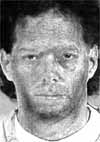Green River Gary: The Portland Connection
Anne Rule has a knack for telling a frightening story in a frightening way. She does this very well here. Maybe the scariest part of the story is about Ridgeway’s third wife, a woman he was married to for nearly twenty years. Ridgeway married his third wife in 1985, after the worst of his killing frenzy had ended. He did kill while they were married, but not at the frenetic pace he had kept in 1982 – 1984. His wife knew nothing of his crimes and was shocked to hear that her husband was the Green River Killer.
Ridgeway did most of his killing in Seattle and in south King County, but it is clear that he traveled to Oregon and he may have killed at least one victim here.
On June 13, 1985 human bones were found near Bull Mountain Rd in Tigard, just south of Portland. Police came to investigate the discovery and soon realized they had another cluster of Green River victims.
Soon they had identified the bodies of two women; Denise Darcel Bush, 23, and Shirley Marie Sherrill, 19. Ironically Denise Bush was originally from Portland, she had last been seen in Seattle, though. Bush disappeared on October 8, 1982 near the corner of Pacific Highway and S. 144th. Sherrill had spent considerable time in Portland, working The Camp, a prostitution area that flourished in downtown Portland in the 1980s. Sherrill too had disappeared from Seattle in the International District on October 18, 1982.
Bush was identified by the effects of an earlier brain surgery on her skull. In a macabre twist, Ridgeway had split her skull into three parts and it was found in three separate areas hundreds of miles apart. Ridgeway was playing games with the police.
The Tigard cluster yielded two more bodies before police were through searching; Tammy Liles, 16, who disappeared sometime in the summer of 1983 from downtown Seattle, the other was never identified and is listed as “Oregon 1”. Sadly Tammy Liles had become so estranged from family and friends that no one ever reported her missing and very little is known about her.
Although all of the identified victims found in Oregon had disappeared from, and probably been killed in, Washington, Police in Oregon feared that the Green River Killer had moved south. Seven prostitutes had disappeared in Portland in the last year and at least four were likely Green River victims.
In September, 1985 a 15-year-old girl working as a prostitute in Portland’s Camp was abducted, raped and brutally attacked off of Bull Mountain Rd near Tualatin. She survived and was able to describe her attacker. Many people thought it looked like composite drawings of the Green River Killer. Since Ridgeway’s arrest some people believe this woman’s attacker was Ridgeway, but he has not confessed to that crime.
The September, 1985 attack seems to be much different than Ridgeway’s usual M.O. In this attack the victim was punched, kicked and strangled with panty-hose and a bandana. Ridgeway liked to use his forearm to strangle his victims and he liked to do it while having sex with them.
William Stevens II, one of the main suspects in the Green River Killings, lived in the Tigard area for a while and may have been responsible for some attacks against prostitutes and may have killed. Stevens died of cancer in 1991. He was a main suspect in the killings in 1988 after several people called into a TV show about the killings and said they suspected Stevens.
Stevens was cleared after credit card records seemed to prove that he had been out of the area in 1982 at the height of the killings. His adoptive brother, who had helped to clear him during the 1988 investigation, later became convinced that Stevens was the Green River Killer and for years he had a website that claimed to prove his brother was the killer.
The one victim that Ridgeway may have killed in Portland was Bobby Jo Hayes, 21. The last time anyone remembers seeing Hayes was on February 7, 1987 in Portland. She had just been released from jail on a prostitution charge and she had said that she was headed for Seattle. No one heard from Bobby Jo for another sixteen years, when Gary Ridgeway confessed to killing her.
Gary Ridgeway says that he killed 71 women. He is very precise about the number. He has confessed to and been convicted of 48 killings. Ridgeway says that the police are not smart enough to find his other victims. He has also admitted that he is not smart enough to find them either.
Ridgeway lived most of his life in Renton, WA and he worked for over 30 years at the Kenworth Truck Plant. He never missed a day at work, until he was arrested in 2001. Although he did some traveling during that time, he was pretty much tied to the south Seattle area. There is no telling where the bodies of the rest of his victims are.










 There is good news in the case of the LinCKoln Park Bloods. With recent action from Portland’s Gang Enforcement Unit, the gang has been crippled by the arrest and conviction of 10 members; including Colby “Li’l Shooter” Benson, who says the CK in LinCKoln means Crip Killer.
There is good news in the case of the LinCKoln Park Bloods. With recent action from Portland’s Gang Enforcement Unit, the gang has been crippled by the arrest and conviction of 10 members; including Colby “Li’l Shooter” Benson, who says the CK in LinCKoln means Crip Killer.





